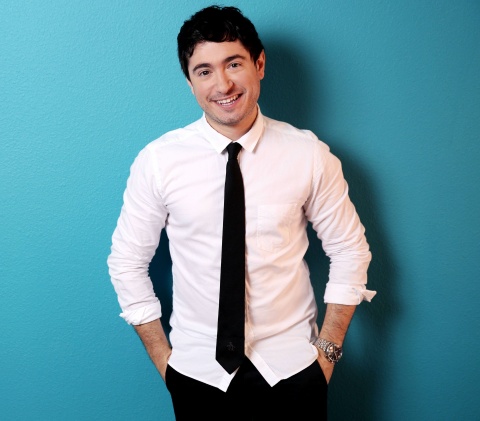Columbia College | Columbia University in the City of New York
More from Our Alumni Experts
Get more fun, practical how-tos from alumni in the know in “The Experts.”
Finding a Workout That Works for You
Andrew Stinger ’06, SoulCycle instructor

Photo: Nick Eucker for SoulCycle
Andrew Stinger ’06 discovered his passion for fitness a few years ago, after trying a SoulCycle class with a friend. He says was drawn especially to the intensity of the workout and the mindfulness-based coaching style and, after riding several times a week and noticing physical and mental changes, decided to leave his Silicon Valley tech job and enter the SoulCycle Instructor Training Program.
How can someone looking for workout motivation find his/her passion?
Try new things. As the fitness industry trends toward increasingly bespoke options, it can be nerve-wracking, but I’ve found it incredibly helpful to take different kinds of classes or visit new gyms with a friend. This way I don’t feel intimidated in an unfamiliar environment, and afterward I can debrief with someone who may’ve noticed or appreciated something I missed. This strategy helped me realize, for example, that I have a blast and get a great workout fumbling through the occasional hip-hop dance class and that I like how my body feels after doing kettle bell exercises with a coach.
Once you find something you enjoy, how can you stick with it?
Find a workout that excites you and brings you joy. You have too many options these days to waste your energy on something you hate! I spent years grumbling my way through half-hearted gym routines or long training runs, when it turns out I’m someone who doesn’t like to work out in solitude.
It’s helpful to find a workout partner or a community to keep you accountable and encouraged. It’s harder for me to skip a class if I know someone is waiting for me, and my friends often notice my progress before I do. Some people like fitness trackers and data to stay accountable — and these can be great — but try to find a way to make your workout about more than a series of numbers.
Cut out any instructor who uses negativity or focuses on correcting “flaws” to motivate you (unless it’s unsafe form or execution). This includes your own negative self-talk: Are you moving your capable body and doing the best you can? Then celebrate that, and embrace the imperfections along the path of progress as opportunities to learn about yourself.
Finally, don’t work out to try to undo a night of unhealthful eating or as a way to earn a treat. Have a margarita or a slice of Hawaiian pizza once in a while, but a healthy lifestyle doesn’t have to be about keeping score. Enjoy the balance!
— Anne-Ryan Heatwole JRN’09
Finn Vigeland ’14’s Core Crossword (a CCT Exclusive)
From the feature article: Step up your crossword game with tips from Finn Vigeland ’14, crossword contributor to The New York Times.
Dr. Ben Schwartz ’03, PS’08 Creates Cartoon Magic
From the feature article: Win at Pictionary with tips from Dr. Ben Schwartz ’03, PS’08, New Yorker cartoonist.
Caramel Oranges Recipe from Christopher Kimball ’73
Reprinted with permission from Christopher Kimball’s Milk Street.
From the feature article: Transform five blah foods into winning dishes with advice from Christopher Kimball ’73, founder of Milk Street Kitchen and formerly of America’s Test Kitchen.
Juggling 101: Practice Makes Perfect!
Roy Pomerantz ’83, 40-plus-year member of the International Jugglers Association
Once you’ve mastered Roy Pomerantz ’83’s recommended first juggling move, the cascade, try these more advanced moves.
- Practice different heights: Juggle each ball higher, then try keeping the balls at the same height, then juggle the balls lower.
- Straighten your arms: The natural position when juggling is with your arms bent at a 90-degree angle. As you improve, try juggling with your arms straight out at a 180-degree angle. This is much more difficult but looks cool.
- Develop eye independence: Juggle in front of a mirror so you can see your juggling moves and can make sure your throws are even. Then, remove the mirror and look straight instead of at the props. If you get really comfortable, try juggling with a blindfold — this really strengthens your skills.
- Move it, move it: Joggling (juggling while jogging or running) is great practice and also good exercise. As a student, Pomerantz performed with the Marching Band and says that doing tricks while marching solidified a lot of his moves. Try walking backward, to the side and in circles while juggling.
- Spread your arms: One of Pomerantz’s favorite moves is to stretch out his arms like wings and juggle the cascade. Varying the height of the balls is also effective as a practice tool.
- Try a marathon: Juggle for as long as you can without stopping. This builds strength, accuracy and stamina.
- Use different objects: Any object that can be thrown from one hand to the other can be juggled in a cascade. The most common are clubs, rings and balls. With clubs, you have the added challenge of a spin (or multiple spins). Many jugglers feel rings are easier to juggle than balls because you can grab them, reducing the potential for drops.
— Anne-Ryan Heatwole JRN’09
From the feature article: Learn Juggling 101 with Roy Pomerantz ’83, 40-plus–year member of the International Jugglers Association.
Jason Fuchs ’09 Writes His Hollywood Tale
By Yelena Shuster ’09
Screenwriter Jason Fuchs ’09 got his big break when he was just a sophomore at the College.

Photo by Matt Sayles
The film studies major wrote, produced and starred in Pitch, a short film that premiered at the Cannes Film Festival in 2006. (A child star — he appeared in “A Christmas Carol” at Madison Square Garden and in the 1996 movie Flipper — Fuchs was no stranger to early success.) Next, he wrote a screenplay for an original romantic comedy about a guy trying to lose his virginity before the end of the world. That script never got made, but it did get the attention of a writing agent at William Morris Endeavor, which landed him his next breakthrough. At just 26, Fuchs was the cowriter of Ice Age: Continental Drift, which became the internationally highest grossing animated film of all time in 2012, earning $881 million.
“That rom-com that never got made ended up being important, because it was my sample. It was this thing that [my agents] were able to send around to introduce me and my voice as a writer,” Fuchs says. “It was sent to Fox Animation, which fortuitously was looking for a writer to come in on Ice Age 4. And that changed everything. I suddenly had an opportunity to write a feature film that had a release date before I had even put pen to paper.
“The fact that I had a movie that was going to be released meant so much because getting your movie made is still a major hurdle,” he adds. “So to be 24, 25, when I was writing the film, and 26 when it was released, was really helpful; it opened doors and got me into rooms.”
One of those rooms? A meeting with Warner Brothers executive Sarah Schechter, to whom Fuchs pitched a Peter Pan prequel that had been rejected by every studio he pitched. WB bought it; Pan, starring Hugh Jackman, Rooney Mara and Amanda Seyfried, was released in October 2015. Fuchs’ role as a screenwriting prodigy was cemented and he earned a place on Forbes’ 2015 Hollywood “30 Under 30” list.
“Pan changed things for me because people read that script and felt like I was capable of creating something original that was a big idea, and well-executed,” Fuchs says.
Up next for Fuchs is a screenplay for Paramount’s Luna Park, starring Tom Cruise, and Gold Circle’s Break My Heart 1,000 Times with Bella Thorne. According to Variety and Yahoo! Movies, he is writing three scripts for WB, including Wonder Woman, starring Gal Gadot, DC Comics’ Lobo and video game franchise Minecraft.
Fuchs has written a number of screenplays that were never produced, which is par for the course, he says: “Almost nothing gets made. If you want to see your work be realized, you should be in television, because that’s more of a writer’s medium. I’ve had a lucky, blessed stretch, but every time a movie you write is made, it’s a miracle.”
Yelena Shuster ’09 has written for The New York Times, InStyle and Manhattan magazine. She also edits admissions essays at TheAdmissionsGuru.com. Follow her at @YelenaShuster .
From the feature article: Break into screenwriting with Jason Fuchs ’09, co-writer of Ice Age: Continental Drift.
Making a Boulevardier with Rina Haverly '07
From the feature article: Create cocktail perfection with Rina Haverly ’07, bartender and owner of The Bad Old Days bar in Ridgewood (Queens), N.Y.
Issue Contents
Published three times a year by Columbia College for alumni, students, faculty, parents and friends.
Columbia Alumni Center
622 W. 113th St., MC 4530, 4th Fl.
New York, NY 10025
212-851-7852
cct@columbia.edu
Columbia Alumni Center
622 W. 113th St., MC 4530, 4th Fl.
New York, NY 10025
212-851-7488
ccalumni@columbia.edu

